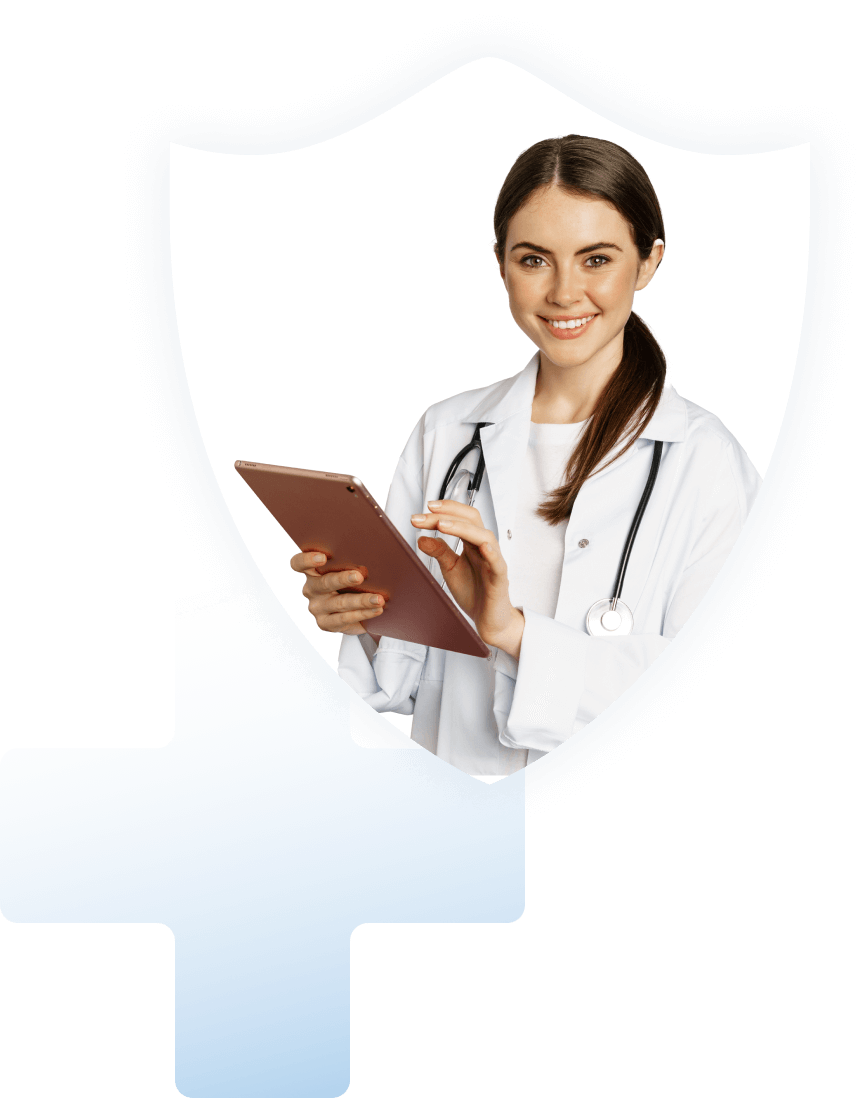Preferred Location: 1722 Pine St Montgomery,AL 36106 Montgomery Change location
Preferred Location: 1722 Pine St Montgomery,AL 36106 Montgomery Change location
SaferSTD Preferred Location: 1722 Pine St Montgomery,AL 36106 Montgomery Change Location

The state of Alabama is nestled on the Southeast gulf coast between Georgia and Louisiana. Its history is rich and varied, being the birthplace of the Confederate States of America and the first state to create the first rocket for the moon. Unfortunately, not all the statistics are positive. For example, Birmingham, AL is ranked fifth in the nation for violent crimes. Sexually transmitted diseases are another problem.
The state offers free STD Testing Centers in each of its 67 counties – and for good reason. It boasts rather dismal statistics with several sexually transmitted diseases. The state began tackling the STD issue by implementing more sensitive urine-based testing several years ago in these STD clinics which has made STD health concerns easier to diagnose and track. In addition to the statewide free clinics. all major cities offer free and paid private STD testing through independent clinics.

The Centers for Disease Control and Prevention1 (CDC) recommends screening for the most common STDs, including chlamydia, gonorrhea, hepatitis B, hepatitis C, syphilis, herpes 1, herpes 2, and HIV for both men and women. In addition, the CDC suggests women get screened for trichomoniasis.
SaferSTD recommends searching for locations that offer a 10-test panel which tests for the most common bacteria and viral STDs in the U.S. with additional premium add-ons like early HIV detection, if needed.
The CDC2 provides detailed STD testing information as to when you should get tested. In summary, you should get tested today if you are sexually active, never been tested before, have had unprotected sex in the past, or if you exhibit symptoms.
According to the World Health Organization3, the majority of STI cases reported every day, more than one million, are asymptomatic; another reason to get tested today.
You should get tested again in 90 days to rule out STDs that have specific exposure waiting times, including HIV.
STD testing can be a quick and simple process, depending on the type of test you choose and where you get tested. Some may require an oral or genital swab, a urine test or blood sample, or a physical exam to check your genital area for signs of an STD.
SaferSTD has identified preferred providers that require only a urine test, a blood sample, or both without a physical exam.
The speed at which you receive your STD testing results depends on where you get tested. Before you choose your location, find out how long testing results will take.
At-home STD testing results are usually 3-5 business days, depending on the manufacturer of your test. You also need to take into account the amount of time it takes to receive the test or pick one up, perform the test, and ship it back, before the lab can analyze your results and report back to you.
If you test at a public facility such as a neighborhood clinic, you may have to wait a week, if not more for the results, which could delay treatment. If you test through a private facility, they have the fastest turnaround within 1-3 business days.
SaferSTD has researched and identified the most accredited and most reputable testing locations. Click here to find a preferred location near you.
Some STD testing clinics offer same-day walk-in options without an appointment. Below are nearby preferred locations that offer this option.
The cost of STD testing depends on whether you select private, public, or at-home testing, as well as the type of test(s) you need.
Several at-home STD options and public testing locations can cost up to $250, with most on the higher end, depending on the brand and type of testing. Public testing fees also vary based on income and welfare eligibility.
With private testing, you may save money on a low-cost comprehensive 10-test panel that tests for the most common bacterial and viral STDs in the United States.
SaferSTD has researched and identified reputable locations that offer upfront pricing without hidden fees. Click here to find a preferred location near you.

Accredited and Certified
These location types are best for: Privacy and convenience
Description: Order online and receive a doctor's order to visit this lab to get tested in as little as 15 mins. Get your results privately within 1-2 business days and speak with a doctor over the phone if your test results come back positive. Doctors may prescribe treatment or refer you to a specialist if needed.
Accredited and Certified
These location types are best for: Privacy and convenience
Description: Getting an STD test at a clinic near you has never been easier. When you choose this location, you can get a doctor's requisition to get tested in as little as 15 minutes. Following your test, you receive your results privately within 2 business days, and can speak to a doctor over the phone with confidence, should results come back as positive.
Accredited and Certified
These location types are best for: Privacy and convenience
Description: Why go to a public clinic? Get convenient and fast STD testing that is 100% confidential. Individual tests under $50. Order online and visit this lab the same day for a quick 15 min test. Get your results online within 1-2 business days, and view them privately. Doctor consultation available over the phone, should results come back as positive.
Accredited and Certified
These location types are best for: Privacy and convenience
Description: Get Fast, Easy and Affordable testing at this location. Results come back within 2 business days and be in and out of the lab in less then 20 minutes.
Show only locations where privacy and discretion is taken into importance.
Description: AIDS Service Organization.
Description: Need to register as a patient. Open every 1st Saturday of the month, 8am–12noon
Description: Public Health Department/Social Services Department. Free condoms available.
Show only locations where you can easily book your test online.
Description: Need to register as a patient to receive services. Closed from 12noon-1pm daily
Description: Closed daily from 12noon-1pm
Description: Public Health Department/Social Services Department. Free condoms available. Closed for lunch 12noon-1pm
Show only locations where they offer the HIV RNA Early Detection Test for people who think they may have been recently exposed to the HIV virus
Description: Public Health Department/Social Services Department. The Alabama Department of Public Health 67 County Health Departments operate free, confidential STD clinics statewide. Free testing and treatment is provided for chlamydia, gonorrhea, syphilis and HIV.
Description: Public Health Department/Social Services Department. Free condoms available.
Description: Open every 3rd Saturday of the month, 8am–12noon
Description: Closed daily 12:30pm-1:30pm for lunch
Description: Public Health Department/Social Services Department. Free condoms available upon request. Closed for lunch from 12noon-1pm
Description: Closed daily 12:30pm-1:30pm for lunch
Description: Closed daily 12:30pm-1:30pm for lunch
Description: Public Health Department/Social Services Department. Free condoms available.
According to the Centers for Disease Control (CDC) data, in 2013 Alabama was third behind Alaska and Louisiana in chlamydia infections and second only to Louisiana for gonorrhea.
While chlamydia had been on the rise across a ten year period, there was a slight decrease noted between 2012 and 2013 in the state. The largest infection rates were noted in a band of counties across the southern portion of the state, including Sumpter, Greene, Hale, Dallas, Wilcox, Lowndes, Perry, Montgomery, Pike and Macon counties.
Gonorrhea also saw a decline from 2012 to 2013 with approximately 175 cases per population of 100,000. This was a decrease of 10.8%. Similar to the chlamydia cases, the majority of gonorrhea cases were found in black women. The largest number of cases was found in Greene and Montgomery counties.
Due in large part to education efforts and cooperation between public and private agencies, syphilis infection rates have gone down.
Its government has a number of statutes that direct STD health, testing and prevention including:
The state has taken a number of measures to educate the public in an attempt to staunch the contraction of STDs. For example, Alabama statute 22-11A-20 requires physicians to educate diagnosed patients on proper treatment and prevention of the spread of STDs. The free STD clinics also offer support for citizens with STDs.
However, STD education in its public schools is not mandatory which leaves an educational gap. Any school that does offer sex education curriculum is required to teach that:
Abstinence from sexual intercourse is the only completely effective protection against unwanted pregnancy, sexually transmitted diseases, and acquired immune deficiency syndrome (AIDS) when transmitted sexually. Section 16-40A-2 (1)
In addition, the education has to provide statistics of the efficacy of various forms contraception against HIV and AIDS. CDC studies indicate this level of education is not enough, listing Alabama as a high risk state for contracting HIV.
One service offered by the organization Thrive is a program called SMASH (Student Movement Against Stigma and Hate). It offers peer-to-peer education among high school students in the northern counties on HIV/AIDS awareness and prevention. In addition to SMASH, HIV testing and other education services, Thrive is also raising money to implement a mobile testing unit.
HIV tests and AIDS prevention methods are varied across the state. While the free clinics in each county offer testing, more notable education efforts are found in the larger cities. For example, Birmingham Aids Outreach offers education services on prevention and after diagnosis care, testing, PAWS program and an iPhone app.
While many clinics offer standard tests for a variety of STDs including HIV, chlamydia, gonorrhea, syphilis, and herpes, free testing and treatment are specifically targeted to chlamydia, gonorrhea, syphilis and HIV. There is very little mention of herpes testing on the Alabama Public Health site, with efforts being concentrated on other STDs.
Given that sexual health education is not required in the state, it is not surprising that the Alabama Public Health website indicates citizens between the ages of 15 and 29 are two times more likely to contract HIV than other residents. Similarly, other regularly tracked STDs showed similar findings as recently as the first two quarters of 2016 in Alabama’s Quarterly Surveillance Report:
Twice as many females (71%) in all age groups tested positive for an STD than males (29%).
In fact, the three states that rank consistently the highest in STD infections do not require sex education in their public schools.
It’s worth noting that in several studies prepared by Alabama Department of Education, several of the counties that had the highest percentage of reported STDs had the poorest rankings in school quality – including Greene, Macon and Lowndes counties. These are the same counties that have high HIV infection rates.
Both Greene and Montgomery counties, which had the highest STD reports, were underperforming in all areas (reading, math, overall student achievement, and graduation rates) when compared with all state locations combined. These numbers indicate there is a relationship between poor school performance and increased incidence of sexually transmitted diseases in school aged children.
Overall the state does not fare well when compared to other state STD statistics and educational efforts. It fails in prevention of commonly tract infections, ranking in the top three states with high numbers of chlamydia and gonorrhea. Little to no mention is giving to herpes tests. There seems to be a relationship between poor school performance and increased incidence of these STDs. (Louisiana, who had the most cases of chlamydia and gonorrhea of any state in 2013, also was ranked low with Alabama in school performance.)
The state has made strides toward furthering education and research on STDs, including efforts at University of Alabama to house an STD-HIV Prevention Training Center and their participating in the Gonococcal Isolate Surveillance Project (GISP). While there are some indication that there is a slightly downward trend in new STD cases across the state, only time will tell if their continued efforts with public education and free testing will pay off.
https://www.cdc.gov/std/stats13/tables/2.htm






